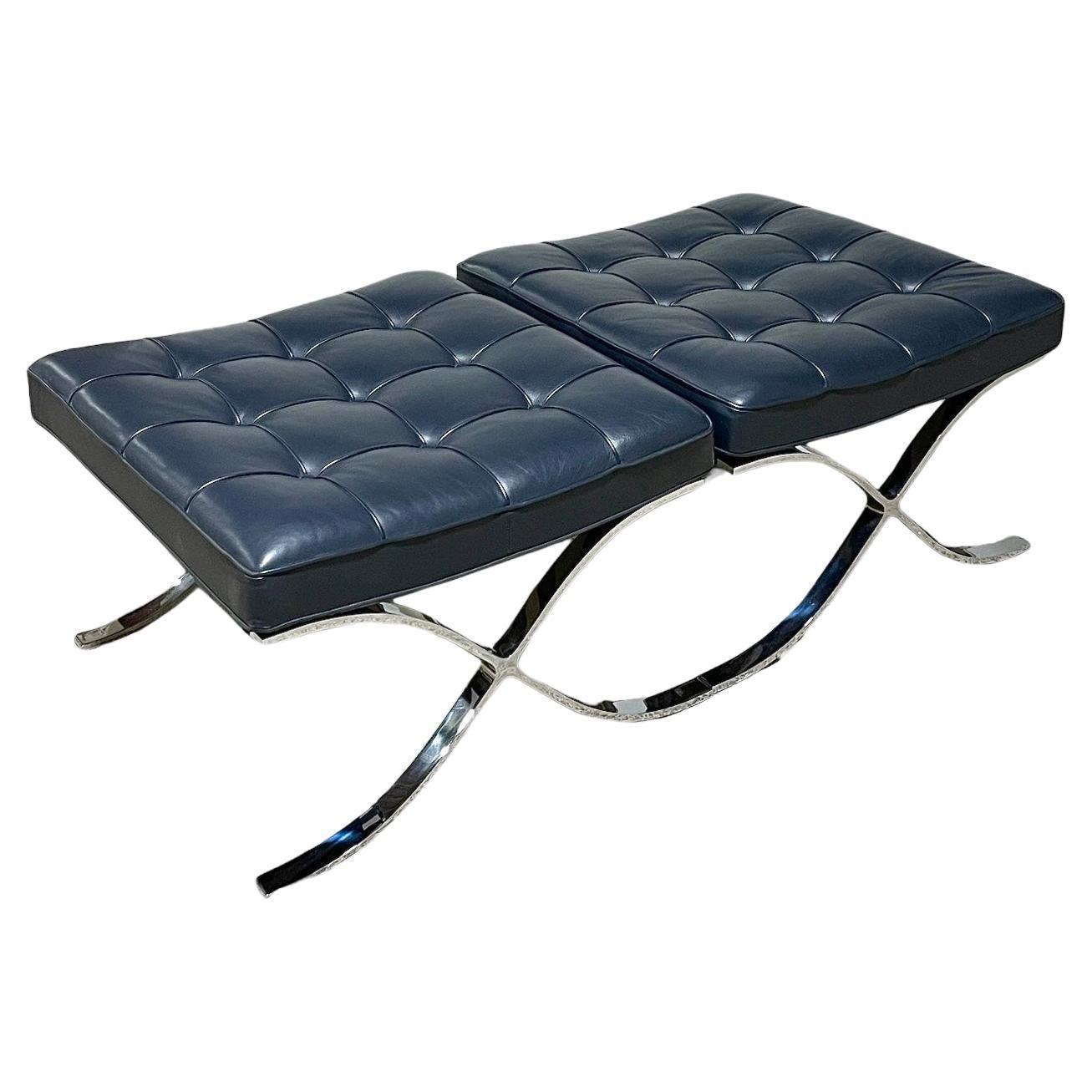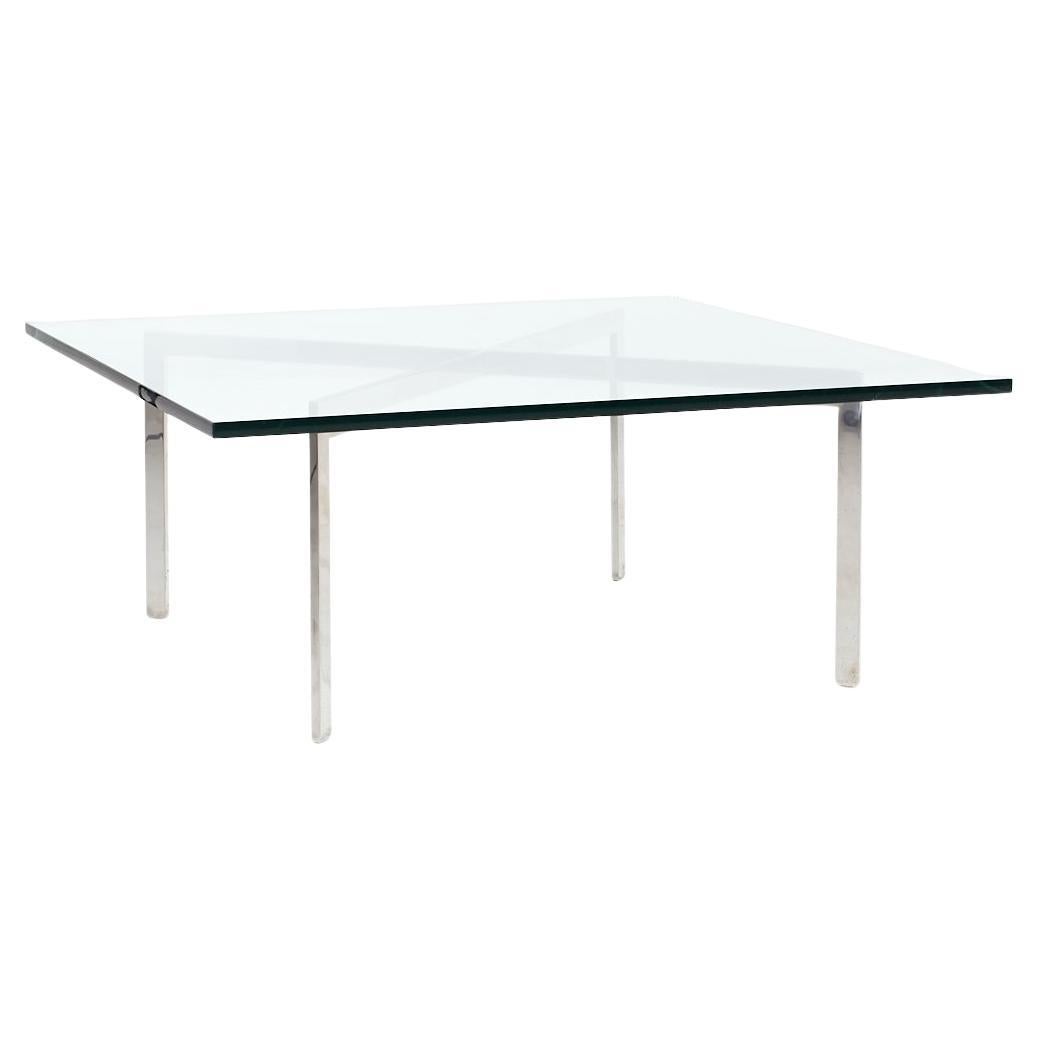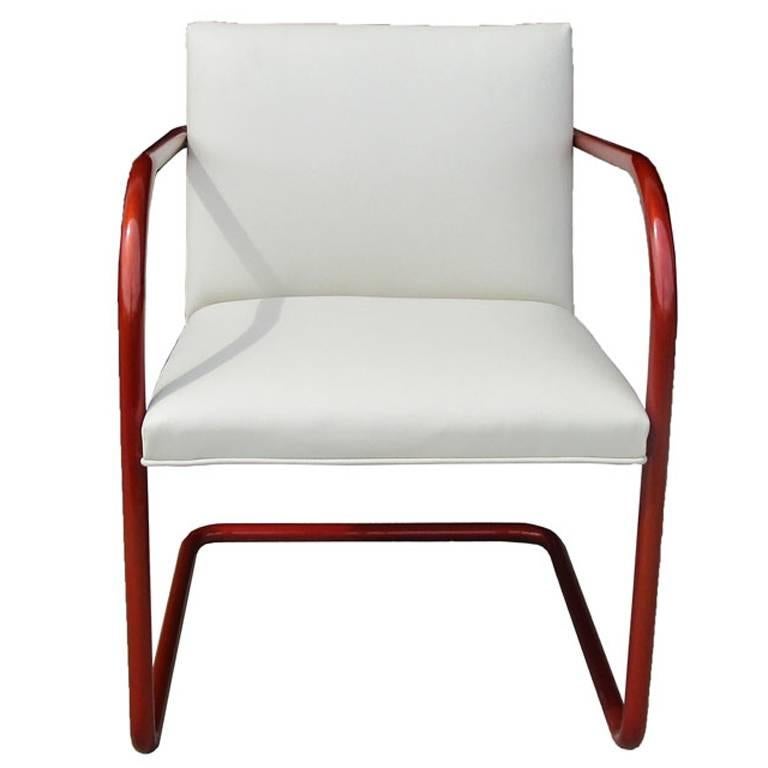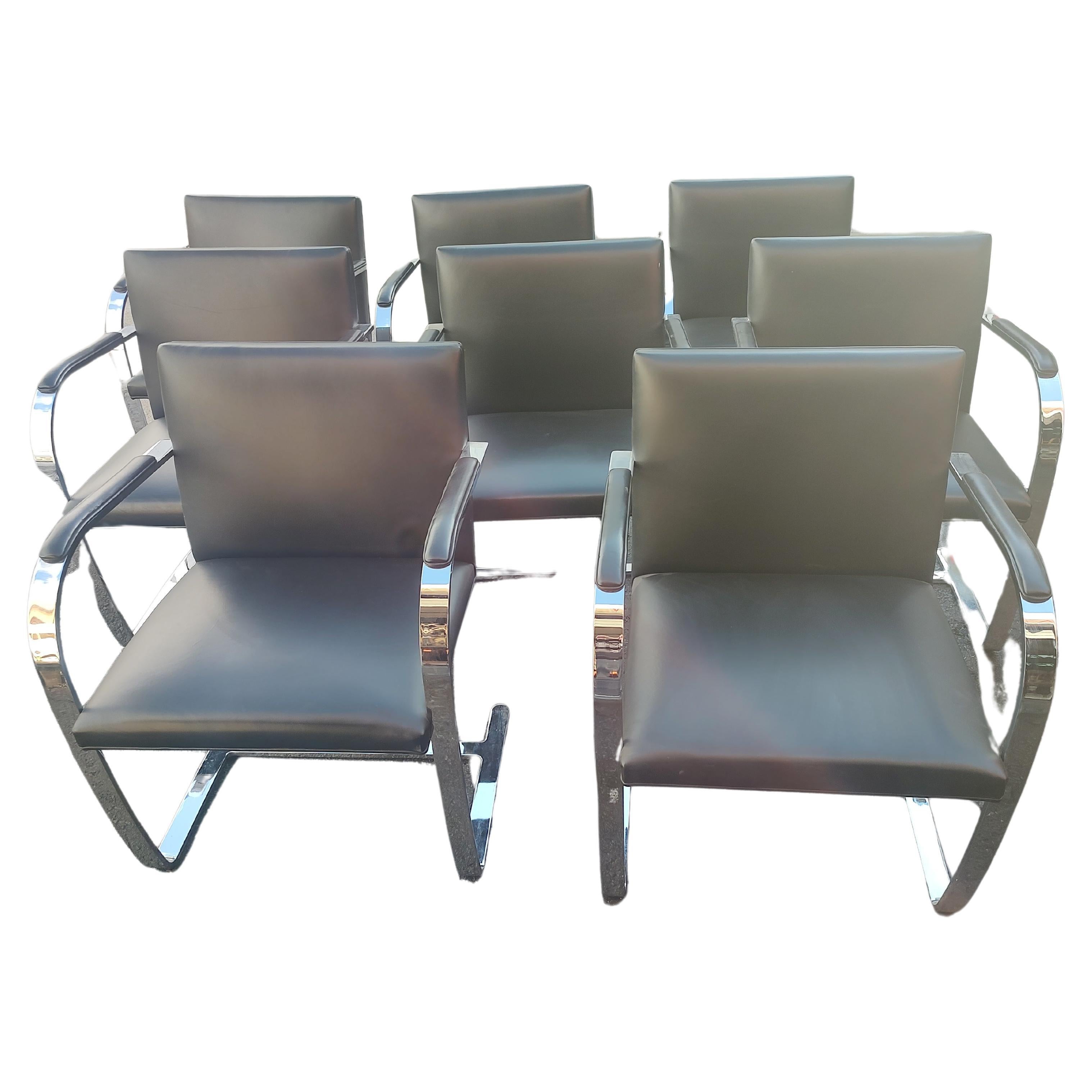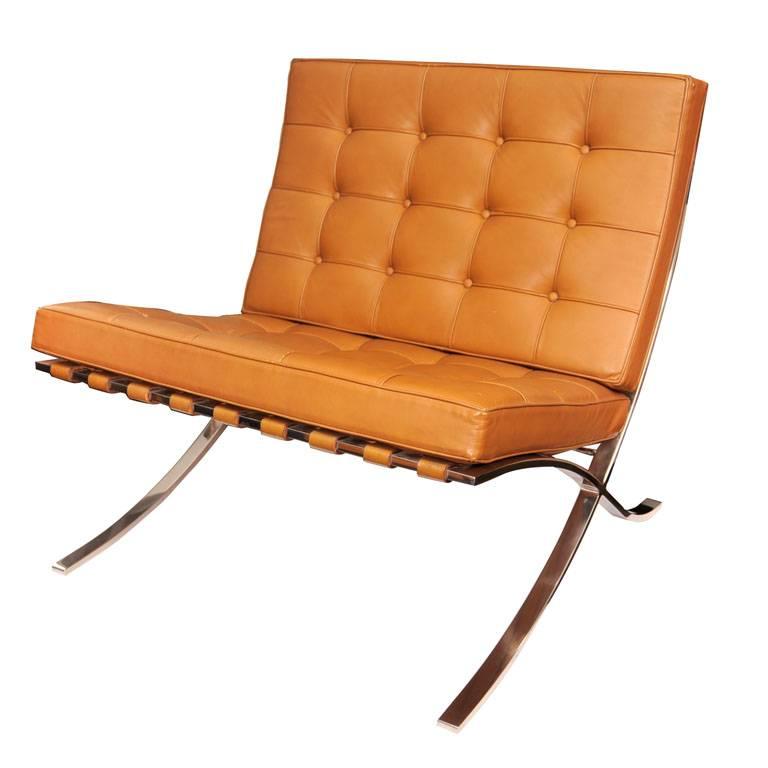

Barcelona Series
When the spare and elegant furniture that populates the Barcelona series was designed, the collection became an exemplary symbol of modernism. So, too, did the structure for which the furniture was intended: German architect Ludwig Mies van der Rohe (1886–1969) and his partner and fellow designer Lilly Reich (1885–1947) devised the Barcelona chair (and stool), a widely celebrated work of chrome-plated stainless steel and leather upholstery, as well as the minimalist Barcelona table and Barcelona daybed for the 1929 Barcelona International Exhibition.
Specifically, the Barcelona series was designed as part of the German Republic’s commissioning of Mies and Reich to create the Barcelona Pavilion, which introduced the Barcelona International Exhibition's German component. The exhibition was the second World Fair to be held in the Spanish city and was pivotal to the development of numerous architecture styles in the early 20th century.
It wasn’t until Mies fled Germany for the United States as the Nazis rose to power that the Barcelona series he and Reich created became better known. After departing the Bauhaus school in 1937, Mies settled down in Chicago, where he became the director of the Illinois Institute of Technology. There, he met and befriended legendary designer Florence Knoll, and Knoll, the company she helped her husband Hans establish — which is now credited with manufacturing some of the most celebrated designs of America’s mid-century modern period — brought the Barcelona series to mass production in 1947. Knoll still produces these pieces today.
Shop Designs in the Collection

Architect, furniture designer and educator, Ludwig Mies van der Rohe was a central figure in the advancement and promotion of modernist design and architectural theory and practice. Like Frank Lloyd Wright and Le Corbusier, he was a hugely influential presence in the field, who shaped the course of 20th-century architecture both through his buildings and his teaching of rationalist design principles.
Born in the medieval German city of Aachen, Mies found an interest in architecture as a boy while working for his father, a master stonemason. He had no formal education as an architect, but learned his skills as an apprentice to the designer Bruno Paul, and as a staffer in the office the proto-modernist architect and designer Peter Behrens. Following World War I, Mies rose to prominence in his field amid the liberal atmosphere of the Weimar Republic. His reputation was secured by his work on the German Pavilion at the 1929 International Exposition in Barcelona (commonly referred to as the Barcelona Pavilion) — which Mies codesigned with Lilly Reich, his creative and romantic partner — a radically simple, poetic, open-plan building pared down to its architectural essentials. Mies would go on to direct the Bauhaus from 1930 until 1933, when Nazi-government interference forced the closure of the progressive art and design school. Later that decade, he made his way to Chicago, where he remained for the rest of his career as a practicing architect and a dean of the Illinois Institute of Technology.
Mies’s famed dictum “less is more” grew from his belief that architecture both guides and expresses the spirit of the times, and he envisioned the 20th century as open-minded, logical, transparent and liberated by technology. His best-known buildings — residences such as the Villa Tugendhat in Czechoslovakia and the Farnsworth House in rural Illinois; skyscrapers like the 860–880 Lake Shore Drive apartment towers in Chicago and the Seagram Building in New York — reflect that philosophy. As do the most famous furniture designs authored by him or codesigned with Reich.
Pieces designed by Mies and Reich such as the Barcelona chair (the authorized version is produced by Knoll today), stools and daybed, or the cantilevered Brno chairs, deliver a maximum of comfort and support from a minimum of materials: their “lavishness” derives from the precision with which they are engineered and constructed. For the collector, the allure of Mies’s furniture is at once practical and idealistic. Useful and functional, his works embody the highest aspirations of modernism.
Find vintage Mies van der Rohe chairs, tables and other furniture on 1stDibs.
More Ludwig Mies van der Rohe Designs
Read More
The 21 Most Popular Mid-Century Modern Chairs
You know the designs, now get the stories about how they came to be.
Iconic Furniture Gives These 1stDibs 50 Rooms Timeless Appeal
A well-made armchair, table or pendant lamp can afford both comfort and convenience. An exceptional one can transform a space. See how the honorees on this year’s 1stDibs 50 list of top interior designers used standout pieces to create the kind of rooms you never want to leave.
Mies van der Rohe’s Barcelona Chair Shook Modernism and Charmed Hollywood
The enduring appeal of the Barcelona chair is in the details.
A Short History of the World’s Most Iconic Designs
Of the million-plus items on 1stdibs, some seem to have transcended time, looking as fresh today as when they were first produced. The pieces highlighted on our new Iconic Designs page stand out for longevity, functionality and quality of design and manufacture — just the tonic for the present unsettled moment.
How Chicago, Mies van der Rohe’s Adopted Home, Remembers the Architect
The Windy City's Matthew Rachman Gallery takes a deep dive into the designer's practice.


